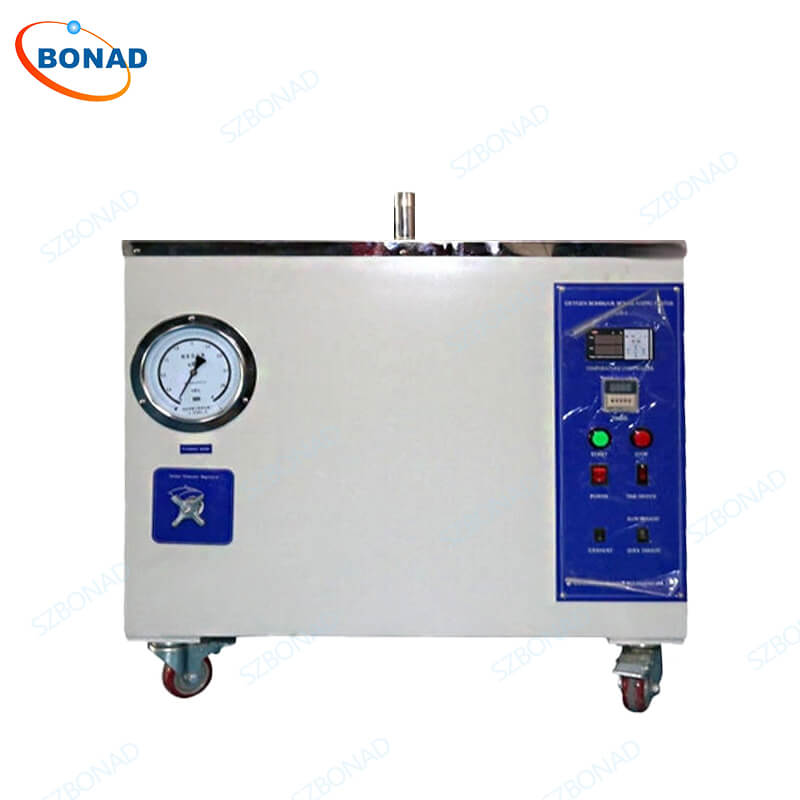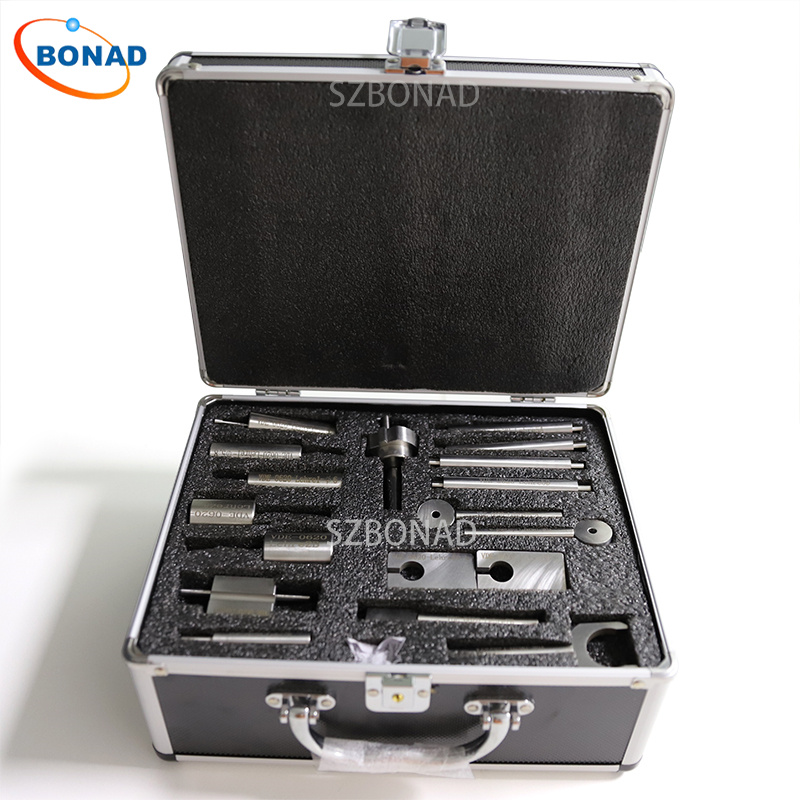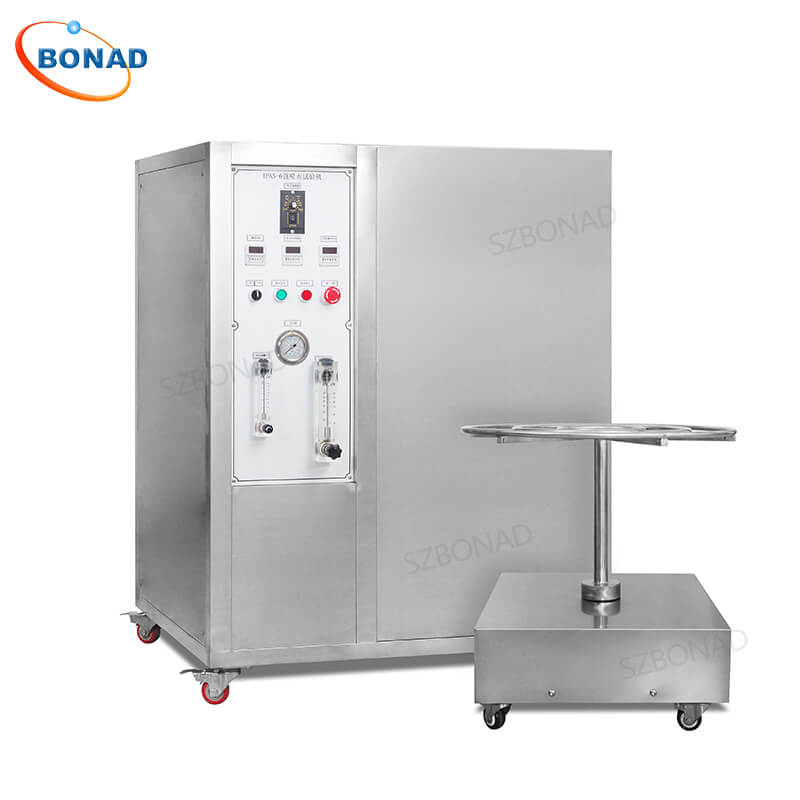Understanding the Importance of Oxygen Bomb Aging Testers
The Oxygen Bomb Aging Tester, also known as the Air Bomb Aging Test Chamber, is a critical piece of equipment used in various industries to evaluate the durability and performance of materials under accelerated aging conditions. This device is particularly important for inspecting and testing valves used in household appliances such as washing machines, water heaters, water pumps, and water pipes. The tester ensures that these components can withstand prolonged exposure to high temperatures and pressures, which are common in real-world applications.
One of the key standards that govern the use of oxygen bomb aging testers is IEC 60335-1 Clause 22.32. This clause sets forth stringent requirements for the safety and performance of electrical appliances, ensuring that products meet international safety standards. By adhering to these guidelines, manufacturers can guarantee that their products are not only reliable but also safe for consumers to use. The oxygen bomb aging tester plays a pivotal role in helping companies comply with these standards, thereby enhancing product quality and reducing the risk of failures.
Moreover, this equipment is widely utilized in research, production, and quality inspection departments of valve manufacturers. It is also indispensable for quality inspection units and testing companies that need to ensure the longevity and reliability of polymer materials. The ability to simulate harsh environmental conditions makes the oxygen bomb aging tester an invaluable asset in the development and testing phases of new products. As a result, it has become an essential tool for maintaining high standards in the manufacturing industry.

Key Features and Components of the Oxygen Bomb Aging Tester
The IEC 60335-1 Clause 22.32 Oxygen Bomb Aging Tester is designed with precision and durability in mind, incorporating several key features that make it a robust and reliable testing solution. One of its most notable characteristics is the use of a stainless steel tank container, which provides excellent resistance to corrosion and wear. This ensures that the tester remains functional over extended periods, even when subjected to harsh testing conditions.
The tank body itself is meticulously constructed, featuring multiple layers that enhance its performance. These include an outer box, an insulation layer, a heater, a temperature-resistant aluminum cover, a stainless steel pressure tank, and a sample tray. Each component plays a crucial role in maintaining the integrity of the testing environment. For instance, the insulation layer helps to minimize heat loss, while the heater ensures consistent temperature control throughout the testing process. Additionally, the stainless steel pressure tank is designed to withstand high-pressure conditions, making it suitable for testing materials under extreme stress.
Safety is another critical aspect of the oxygen bomb aging tester. To prevent accidents, the device is equipped with an overpressure automatic protection device, which automatically releases excess pressure if it exceeds safe limits. This feature ensures that the tester operates within safe parameters at all times, protecting both the equipment and the personnel involved in the testing process.
The electrical control cabinet is another vital component of the oxygen bomb aging tester. It houses the control systems responsible for managing the testing process. The cabinet includes an outer cabinet, a distribution box, and a gas distribution chassis. These elements work together to provide precise control over the testing conditions, allowing operators to monitor and adjust parameters such as temperature and pressure with ease. The combination of these advanced features makes the oxygen bomb aging tester a powerful tool for conducting accurate and reliable tests on polymer materials.
Applications and Benefits of Using the Oxygen Bomb Aging Tester
The Oxygen Bomb Aging Tester offers a wide range of applications across various industries, making it an indispensable tool for manufacturers and testing facilities alike. Its primary function is to simulate the effects of long-term exposure to elevated temperatures and pressures, providing valuable insights into how materials will perform in real-world conditions. This is especially important for polymer material testing equipment, where the durability and resilience of materials are critical factors in determining their suitability for use in different applications.
For example, in the production of valves for household appliances like washing machines and water heaters, the oxygen bomb aging tester helps ensure that these components can withstand the rigors of daily use without degrading or failing. By subjecting valves to accelerated aging conditions, manufacturers can identify potential weaknesses and make improvements before the products reach the market. This not only enhances product quality but also reduces the likelihood of costly recalls or customer dissatisfaction.
Furthermore, the oxygen bomb aging tester is widely used in the research and development of new materials. Engineers and scientists rely on this equipment to evaluate the long-term performance of polymers, composites, and other materials under controlled conditions. This data is invaluable for developing innovative products that meet the demands of modern consumers. In addition, the tester’s compliance with IEC 60335-1 Clause 22.32 ensures that all tests are conducted according to internationally recognized standards, providing a benchmark for quality and safety.
In summary, the Oxygen Bomb Aging Tester is a versatile and reliable tool that plays a crucial role in ensuring the quality and safety of materials used in various industries. Whether you’re a manufacturer looking to improve product performance or a testing facility aiming to meet strict regulatory requirements, this equipment is an essential investment for anyone committed to excellence in material testing.


